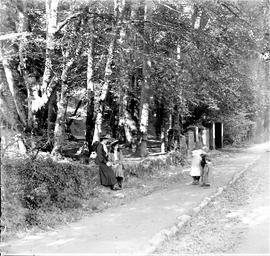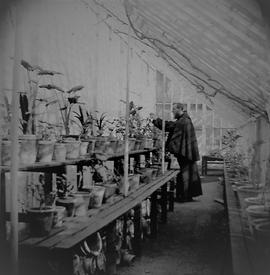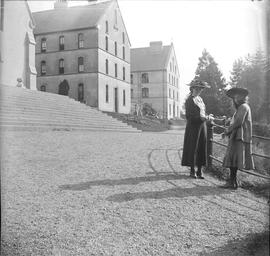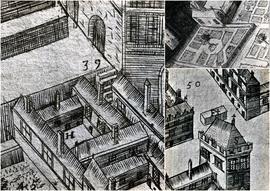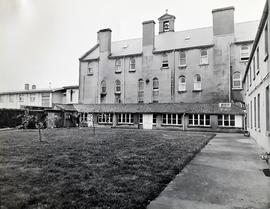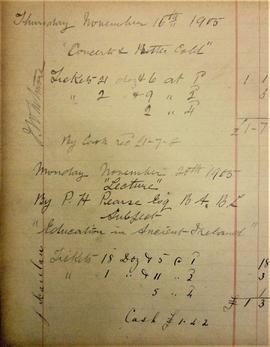Thomastown Castle, County Tipperary
- IE CA PH/1/21
- Unidad documental compuesta
- 1913
Parte deIrish Capuchin Archives
‘Paget Prize Plate Co., Ltd., Watford’ box. The box contains a manuscript note which reads: ‘With Fr. Russell’s compliments. Negatives of Thomastown Castle, County Tipperary. Front and back views. Maynooth, 27 Nov. 1913’. The box contains three glass plate negatives. A front and rear view of Thomastown Castle, the childhood home of Fr. Theobald Mathew OSFC (1790-1856), and a photographic image of a letter from Fr. Mathew.
Thomastown Castle, near Golden in County Tipperary, was a large country house built by the Mathew family. The earliest house on this site was built by George Mathew and dated to c.1670. The house was enlarged in the Gothic style by Francis Mathew, 2nd Earl of Llandaff, in 1812. The renowned Irish architect, Richard Morrison (1767-1849), redesigned the house incorporating several Gothic features including the ornate towers on the front elevation. Thomastown Castle was the childhood home of Fr. Theobold Mathew OSFC who abandoned a life of privilege to become a Capuchin friar. By the late nineteenth century the fortunes of the Mathew family had declined, and Thomastown Castle had fallen into ruins and the estate was completely abandoned. The ‘Fr. Russell’ referred to in the manuscript note in the file is probably Fr. Mathew Russell, editor of ‘The Irish Monthly’.


